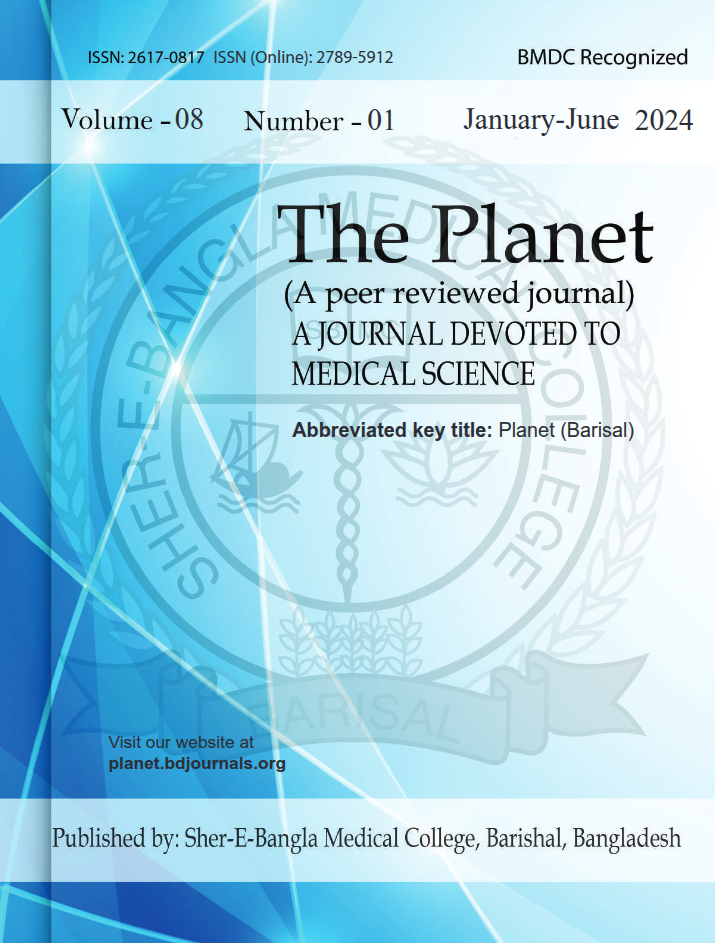Published 28-12-2024
Keywords
- Recurrent Pregnancy Loss,
- Etiology,
- Maternal Age,
- Reproductive Health,
- Polycystic Ovary Syndrome
Copyright (c) 2024 The Planet

This work is licensed under a Creative Commons Attribution 4.0 International License.
How to Cite
Abstract
Introduction: Recurrent pregnancy loss (RPL) is a significant reproductive health issue, affecting a considerable proportion of women globally. Understanding the demographic characteristics and etiological factors associated with RPL is crucial for developing effective management strategies. This study aimed to investigate the age distribution, Body Mass Index (BMI) classifications, and etiological factors contributing to RPL in a cohort of Bangladeshi women. Methods & Materials: This observational retrospective study was conducted at North Bengal Medical College, Sirajganj, Bangladesh, from March 2022 to March 2024. A total of 120 women who experienced two or more consecutive unexpected pregnancy losses were included. Data were collected through structured interviews, medical record reviews, and diagnostic tests. Statistical analysis focused on identifying patterns and correlations between various factors and the occurrence of RPL. Result: The age distribution showed a higher prevalence of RPL in older age groups, with 41.67% of participants aged 41-45 years. Regarding BMI, 48.33% of participants had a normal BMI, while 40% were either overweight or obese. The etiological analysis revealed uterine fibroids (29.17%) and polycystic ovary syndrome (25.83%) as the most common causes, followed by uncontrolled hypothyroidism (18.33%). Chromosomal abnormalities were identified in 1.67% of cases, and 3.33% of cases remained unexplained. Conclusion: The study highlights the increased prevalence of RPL in older women and across various BMI categories, emphasizing the multifactorial nature of RPL. The diverse etiological factors identified necessitate a comprehensive and individualized approach in the diagnosis and management of RPL.



